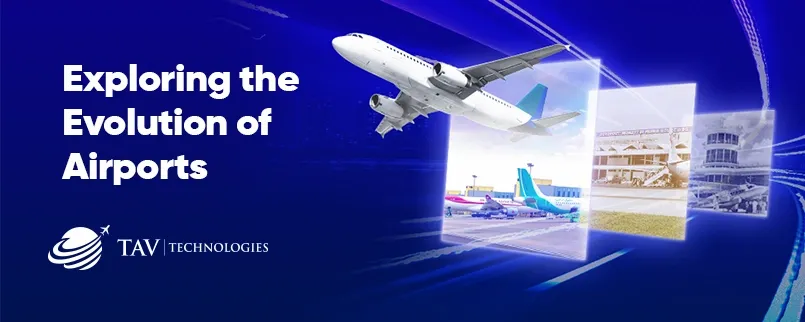
Jan 2023
The history of airports clearly reflects the evolution of transportation and the changing needs of society. From ancient times to today, airports have played a crucial role in facilitating travel and commerce. Thus, they have undergone numerous changes and developments along the way.
Airports as we know them today did not exist until the 20th century. Aviation technology advancements made it possible for planes to fly longer distances and carry more passengers. The concept of an airport, or a designated area for the landing and takeoff of aircraft, has likely been around for as long as humans have been flying. However, the first recorded use of an airport was in 1909, at College Park Airport in Maryland, United States. This airport was established by the United States Army Signal Corps and was used as a training ground for military pilots. It became a civilian airport and served as the site of the first scheduled commercial flight in the United States in 1926.
From Military and Governmental Use to Major Transportation Hubs
As transportation gained more importance, airports began to pop up in other parts of the world. In the late 19th and early 20th centuries, people started to build airports in major cities such as London, Paris, and New York. These facilities were primarily used for military and governmental purposes. These early airports were often small and rudimentary, with austere runways and few amenities.
Transition to Commercial and Civilian Use
Over time, airports' role shifted from military and governmental to commercial and civilian use. With the development of commercial aviation in the early 20th century, airports became more critical for transporting passengers and cargo. To meet the growing demand for air travel, airports began to expand and modernize, adding longer runways, more terminal buildings, and a more comprehensive range of amenities and services.
In the contemporary world, airports are an integral part of modern life, serving as hubs for international travel and commerce. With the growth of the global economy and the increasing mobility of people and goods, airports have become even more important, connecting people and businesses around the globe.
The Rise of the Airport City
As commercial aviation began to take off in the early 20th century, airports began to adopt more standardized design principles. One of the first airports to assume these principles was the Hamburg Airport in Germany, which was built in 1911 and featured a single terminal building with a control tower and hangars for aircraft. As the demand for air travel grew, so did the size and complexity of airports. In the 1930s, the first multi-terminal airports were built, including the Chicago Municipal Airport (now known as O'Hare International Airport) and the New York City Municipal Airport (now known as LaGuardia Airport). These airports featured multiple terminal buildings to handle a larger number of passengers and flights.
During the same period, airports were often located on the outskirts of cities due to the large amount of land needed for runways and aircraft storage. As air travel became more popular and cities grew, airports had to be moved to more accessible locations. This led to the development of the concept of the "airport city," where the airport is integrated into the city as a hub for transportation, commerce, and tourism.
Expansion and Modernization in the Post-WWII Era
In the post-World War II era, the construction of new airports and the expansion of existing ones continued at a rapid pace. Many airports built during this time embraced a modernist style, with sleek, functional buildings and large, open spaces. Some of the most iconic examples of this style include the JFK International Airport and the San Francisco International Airport.
In the latter half of the 20th century, the growth of low-cost carriers and the increasing affordability of air travel led to a boom in air travel and the construction of even larger airports. This has led to a surge in air travel, with many airports experiencing record passenger numbers in recent years.
Various Factors Affect the Evolution of Airports
In response to the increasing demand for air travel, many airports have also turned to technology to improve efficiency and convenience. In recent years, airports have faced challenges related to climate change and sustainability. As a result, many airports are implementing measures to reduce their carbon footprint, such as using renewable energy sources, increasing energy efficiency, and promoting sustainable transportation options for passengers.
In conclusion, the evolution of airports has been shaped by a variety of factors, including advances in aviation technology, the changing needs of society, and the growth of the global economy. From ancient times to the modern era, airports have played a crucial role in facilitating travel and trade. Therefore, they have undergone numerous changes and developments along the way.
Today, airports are an integral part of modern life, connecting people and businesses around the globe, and serving as hubs for transportation, commerce, and tourism. As air travel continues to grow and evolve, it is likely that airports will continue to play a vital role in the global transportation network.
